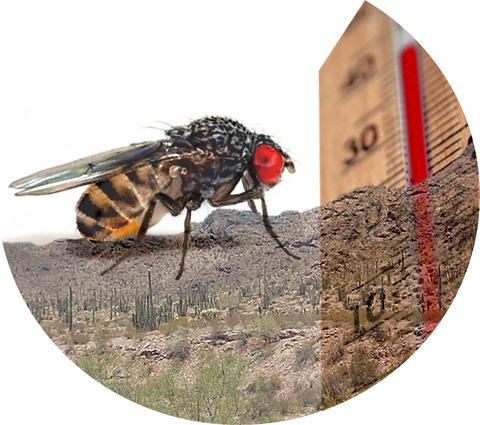当前位置:
X-MOL 学术
›
Funct. Ecol.
›
论文详情
Our official English website, www.x-mol.net, welcomes your feedback! (Note: you will need to create a separate account there.)
Environmental predictability drives adaptive within‐ and transgenerational plasticity of heat tolerance across life stages and climatic regions
Functional Ecology ( IF 5.2 ) Pub Date : 2020-10-16 , DOI: 10.1111/1365-2435.13704 Fernando Diaz 1 , Bram Kuijper 2 , Rebecca B. Hoyle 3 , Nathaniel Talamantes 1 , Joshua M. Coleman 1 , Luciano M. Matzkin 1, 4, 5
中文翻译:

环境可预测性在整个生命周期和气候区域内驱动适应性的代内和代间热耐受性
更新日期:2020-10-16
Functional Ecology ( IF 5.2 ) Pub Date : 2020-10-16 , DOI: 10.1111/1365-2435.13704 Fernando Diaz 1 , Bram Kuijper 2 , Rebecca B. Hoyle 3 , Nathaniel Talamantes 1 , Joshua M. Coleman 1 , Luciano M. Matzkin 1, 4, 5
Affiliation

|
- Although environmental variability and predictability have been proposed as the underlying ecological context in which transgenerational plasticity (TGP) arises, the adaptive significance and interaction with within‐generation plasticity (WGP) in such scenarios is still poorly understood. To investigate these questions, we considered the tolerance to upper thermal limits of larvae and adults of the desert endemic Drosophila mojavensis adapted to different climatic regions (Desert vs. Mediterranean climate).
- Thermal plasticity was investigated by acclimating parents and offspring at 36°C (vs. at 25°C). We then used historical temperature variation data from both regions to perform individual‐based simulations by modelling expected components of adaptive plasticity in multiple life stages.
- Our results indicated that thermal response to ramping heat shocks was more pronounced in larvae, where acclimation treatments in parents and offspring increased their heat‐shock performance, while heat knockdown in adults was only increased by offspring acclimation of adults. The relative contribution of WGP and TGP was greater for the population from the more thermally variable Sonoran Desert.
- Similarly, individual‐based simulations of evolving maternal effects indicated that variation in tolerance to upper thermal limits across life stages and climates is expected from its adaptive significance in response to environmental predictability.
- Our approach offers a new perspective and interpretation of adaptive plasticity, demonstrating that environmental predictability can drive thermal responses across generations and life stages in a scenario with regional climate variability.
中文翻译:

环境可预测性在整个生命周期和气候区域内驱动适应性的代内和代间热耐受性
- 尽管已提出环境变异性和可预测性作为发生跨代可塑性(TGP)的基本生态环境,但在这种情况下的适应性意义以及与代内可塑性(WGP)的相互作用仍然知之甚少。为了研究这些问题,我们考虑了适应不同气候区域(沙漠与地中海气候)的沙漠特有果蝇Mojavensis的幼虫和成虫对高温上限的耐受性。
- 通过在36°C(相对于25°C)使父母和后代适应环境来研究热可塑性。然后,我们使用来自两个地区的历史温度变化数据,通过对多个生命阶段的自适应塑性的预期成分进行建模来执行基于个体的模拟。
- 我们的结果表明,在幼虫中,对逐渐升温的热冲击的热反应更加明显,在父母和后代中进行驯化处理可提高其热休克表现,而在成年后的成年适应中,成年后的热击倒作用只会增加。WGP和TGP的相对贡献对热变化较大的Sonoran沙漠的人口更大。
- 类似地,基于个体的不断演变的孕产妇效应的模拟表明,由于其对环境可预测性的适应性意义,预计在整个生命阶段和气候中对最高温度上限的耐受性会发生变化。
- 我们的方法为适应性可塑性提供了新的视角和解释,证明了在区域气候多变的情况下,环境的可预测性可以驱动几代人和整个生命阶段的热响应。


























 京公网安备 11010802027423号
京公网安备 11010802027423号